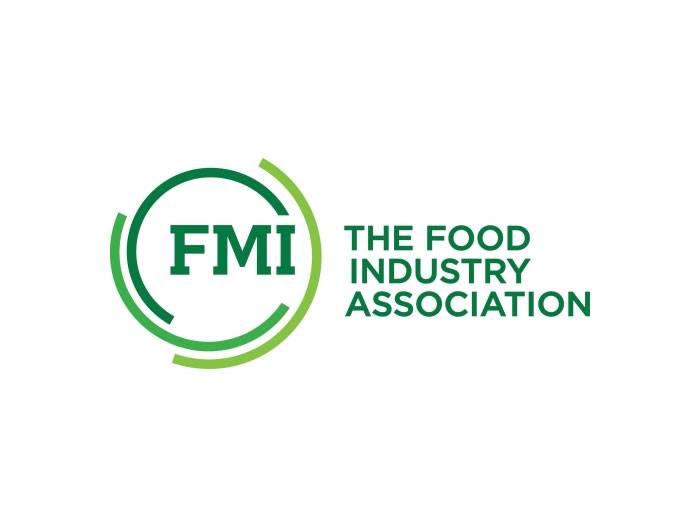
ARLINGTON, VA — One year since the World Health Organization declared COVID-19 a global pandemic, FMI-The Food Industry Association today released a new report, Receipts from the Pandemic: Grocery Store Investments Amid COVID-19 and the Resulting Economics of an Essential Industry, sharing that the food retail industry invested $24 billion in response to the dramatic changes in Americans’ shopping and food consumption habits amid the pandemic. Grocers’ actions included significant safety, workforce and technology investments that have enabled food retailers to safely keep their stores operating, thereby serving communities during the public health crisis.
“We all remember the uncertainty and anxiety that defined the initial weeks of the pandemic, as virtually every aspect of our daily lives changed seemingly overnight,” said Leslie G. Sarasin, president and CEO of FMI. “Since that time, food retailers and our industry’s nearly 5 million dedicated employees have kept Americans fed and shelves stocked while providing a much-needed sense of normalcy for the communities they serve. This report offers new insights into how food retailers have responded to the needs of their customers and communities throughout this unprecedented time.”
Overall Costs
As food retailers responded to the dramatic changes in consumer behavior brought on by the pandemic and economic restrictions aimed at curbing the spread of the COVID-19 virus, retailers made significant operational changes to maintain safe environments for employees and customers and to comply with relevant state and local pandemic-related regulations.
This report, based on a survey of 52 FMI member companies representing almost 40% of the food retailing industry, offers the first comprehensive overview of those changes and a cost analysis of the actions taken by food retailers to safely keep stores open throughout the pandemic. Overall, the report found that food retailers have spent approximately $24 billion on additional pandemic-related expenses since March 2020. These investments include:
- Increases in payroll and incentive pay: $12 billion.
- Increases in benefits: $5 billion.
- Non-monetary benefits and vaccine incentives: $1 billion.
- Personal Protective Equipment (PPE) and other safety expenses: $1 billion.
- Cleaning and sanitation supplies, labor, and other related expenses: $3 billion.
- Technology and online delivery expenses: $1.5 billion.
Safety Investments
According to the data, food retailers spent more than $1 billion on PPE and other safety expenses, such as store signage, COVID-19 tests, and thermometers, and an additional $2 billion on increased cleaning and sanitation hires or use of external partners for this purpose, and more than $400 million on cleaning and sanitization products. Food retailers also invested in new technologies and infrastructure, such as online ordering and curbside pickup services, to meet new consumer demands and the needs of those unable to safely shop in stores.
Labor Costs
Food retailers hired new employees throughout the pandemic to keep pace with consumer demand, which included adding almost 500,000 jobs between 2019 and 2020. Meanwhile, 94% of respondents reported having current job openings; extrapolated for the entire industry, food retailers would employ an additional 100,000 workers if all these positions were filled in 2021.
Financial Impact
Changes in consumer demand combined with an increase in food costs during the past year resulted in higher sales totals for food retailers, though additional pandemic-response operational expenses served to offset much of these revenue gains. In 2019, the average profit margin of the respondents surveyed was 1.06%. Respondents reported that their profits increased modestly in 2020 by 1.44 percentage points to 2.50%, driven mostly by the initial spike in consumer purchases experienced in the early months of the pandemic.
2021 Outlook
As the availability of food-away-from-home options increase and consumer spending and food consumption habits begin to more closely reflect those of the pre-pandemic environment, a majority of respondents expect to see sales decline in 2021. Overall, 63% of survey respondents expect sales to decrease from 2020 levels in some fashion throughout 2021, while another 13% forecast sales to remain flat. Just 23% of respondents expect to see an increase in sales this year. Moreover, 75% of respondents are forecasting a decline in profits in 2021, while only 10% expect to see increased profits as compared to 2020.
“This has undoubtedly been a challenging year for all Americans, and I am especially grateful for the commitment and perseverance of our industry’s workforce throughout this time,” said Sarasin. “Without our grocery workers, we would have been unable to keep our doors open and therefore unable to serve our communities at a time they needed us most. Now, as we continue to remain vigilant against this virus, our industry is also focused on moving forward and assisting with critical vaccination efforts while supporting the nation’s ongoing economic recovery.”
For Media:
Members of the press may contact FMI for a gratis copy of the report via media@fmi.org
###
ABOUT THE REPORT
The study surveyed FMI members and solicited responses from Feb. 24, 2021, through March 15, 2021. Unless otherwise noted, the findings presented in this report were extrapolated based on data provided by respondents to present an industry-wide view of the total costs of pandemic-related expenses incurred by food retailers in the U.S. FMI’s survey was completed by a diverse sample of 52 member companies that represent approximately 40% of the food retailing industry with operations in 50 states and the District of Columbia.
ABOUT FMI
As The Food Industry Association, FMI works with and on behalf of the entire industry to advance a safer, healthier and more efficient consumer food supply chain. FMI brings together a wide range of members across the value chain — from retailers that sell to consumers, to producers that supply food and other products, as well as the wide variety of companies providing critical services — to amplify the collective work of the industry. www.FMI.org



